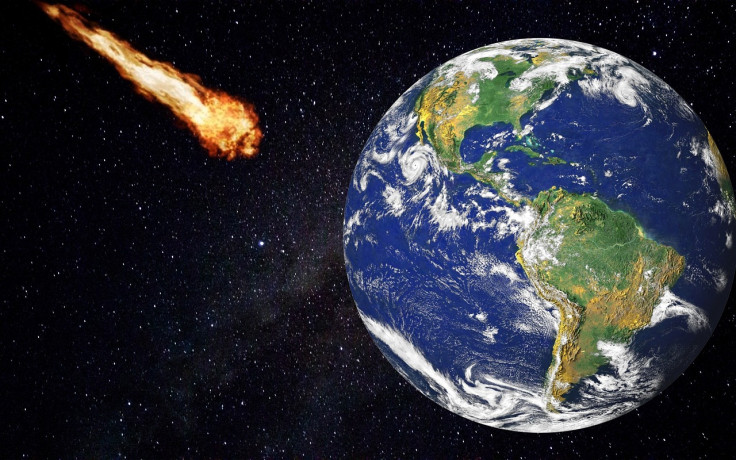'City-Killer' Asteroid Threat Intensifies As Scientists Predict Devastating 2032 Collision
Webb Telescope will observe 2024 YR4, but impact is possible

Could a massive asteroid strike a major city in the coming years?
Scientists are raising concerns about a heightened risk of impact, with predictions pointing to a potentially devastating collision in 2032.
According to NASA's announcement on 18th February, there is a 3.1% probability that a city-destroying asteroid could hit Earth in 2032—making it the most dangerous space rock ever identified through modern forecasting.
Addressing the Asteroid Threat
Despite the rising probability, experts urge the public not to panic. The global astronomical community is closely monitoring the situation, and the James Webb Space Telescope is set to observe 2024 YR4 next month.
'I'm not panicking,' Bruce Betts, chief scientist for the nonprofit Planetary Society, told AFP. 'Naturally when you see the percentages go up, it doesn't make you feel warm and fuzzy and good,' He explained that as astronomers collect more information, the probability will likely climb a bit higher before quickly falling to zero.
2024 YR4: What We Know
The El Sauce Observatory in Chile detected the asteroid 2024 YR4 on 27th December last year. According to its brightness, it is estimated to measure between 130 and 300 feet (40-90 meters) across. Its light signature indicates a typical composition rather than a rare, metal-rich one.
Asteroid 2024 YR4 may hit Earth in 2032. pic.twitter.com/OhKWbLcX8B
— Cosmoknowledge (@cosmoknowledge) February 16, 2025
After the impact probability surpassed 1%, the International Asteroid Warning Network (IAWN), a global planetary defence collaboration, issued a warning memo on 29th January. Since then, the number has varied but generally continues to climb.
A Race Against Time?
NASA now estimates a 3.1% impact probability for asteroid 2024 YR4, which could potentially hit Earth on 22nd December 2032. Those odds are one in 32—similar to guessing five coin flips correctly.
We haven't faced this level of risk from an asteroid this size since Apophis in 2004. It briefly carried a 2.7% chance of impacting Earth in 2029, a threat that was later eliminated through more observations.
According to Science Alert, the European Space Agency's planetary defence chief, Richard Moissl, described surpassing that threshold as 'historic. 'The ESA calculates the risk slightly lower, at 2.8 percent.
March Observations by Webb
'It's a very, very rare event,' Moissl told AFP, but added, 'This is not a crisis at this point in time. This is not the dinosaur killer. This is not the planet killer. This is at most dangerous for a city.'
According to the Planetary Society's Betts, data from the James Webb Space Telescope, the most powerful space observatory ever built, will be crucial for a clearer understanding of its path.
'Webb is able to see things that are very, very dim,' he said, which is important because the asteroid is currently travelling out toward Jupiter, and its next close approach won't happen until 2028. Moissl explained that if the risk climbs above 10 percent, IAWN will issue a formal warning, triggering a 'recommendation for all UN members who have territories in potentially threatened areas to start terrestrial preparedness.'
City-Sized Destruction
While it wouldn't cause a global extinction like the six-mile-wide (10-kilometer-wide) asteroid that killed the dinosaurs 66 million years ago, 2024 YR4 is still a "city killer"—an asteroid capable of causing significant destruction.
Its destructive potential lies less in its size and more in its velocity, which could approach 40,000 miles per hour at impact. If it plunges into Earth's atmosphere, the most likely scenario is a dramatic airburst, detonating in midair with the force of roughly eight megatons of TNT – over 500 times the destructive power of the Hiroshima bomb.
A Looming Threat
Betts explained that if the asteroid is larger than estimated, the possibility of an impact crater cannot be ruled out. The potential impact corridor stretches across a vast area, encompassing the eastern Pacific, northern South America, the Atlantic Ocean, Africa, the Arabian Peninsula, and South Asia.
BREAKING:
— Visegrád 24 (@visegrad24) February 18, 2025
NASA raises risk of the asteroid 2024 YR4 hitting Earth in 2032 to 3.1%. It stood at 2.3% just 2 weeks ago
This is the highest risk assessment an asteroid has ever received. These cities are under threat:
🇨🇴 Bogota
🇨🇮 Abidjan
🇳🇬 Lagos
🇸🇩 Khartoum
🇮🇳 Mumbai
🇧🇩 Dhaka pic.twitter.com/S4Mmbtm6HM
Moissl, however, cautioned against overreacting, saying it's far too early for anyone to consider drastic steps such as relocation. The good news is that we have a lot of time to prepare. NASA's 2022 DART mission showed that spacecraft can deflect asteroids. Scientists have also suggested laser vaporization, gravitational tugs, and even nuclear options as potential solutions.
© Copyright IBTimes 2025. All rights reserved.






















